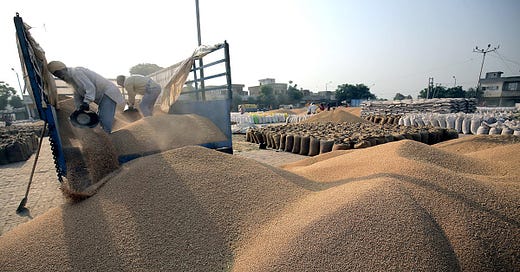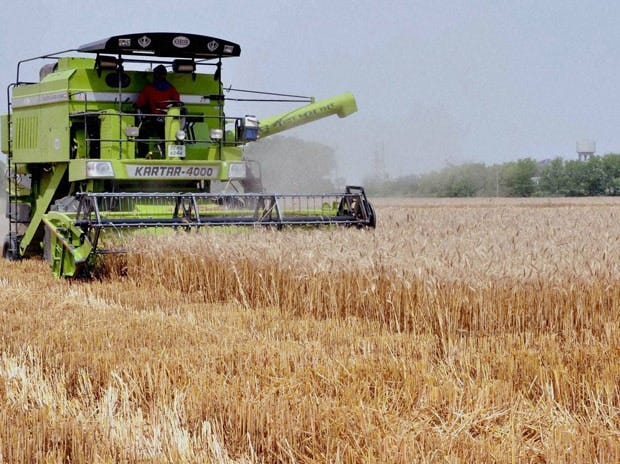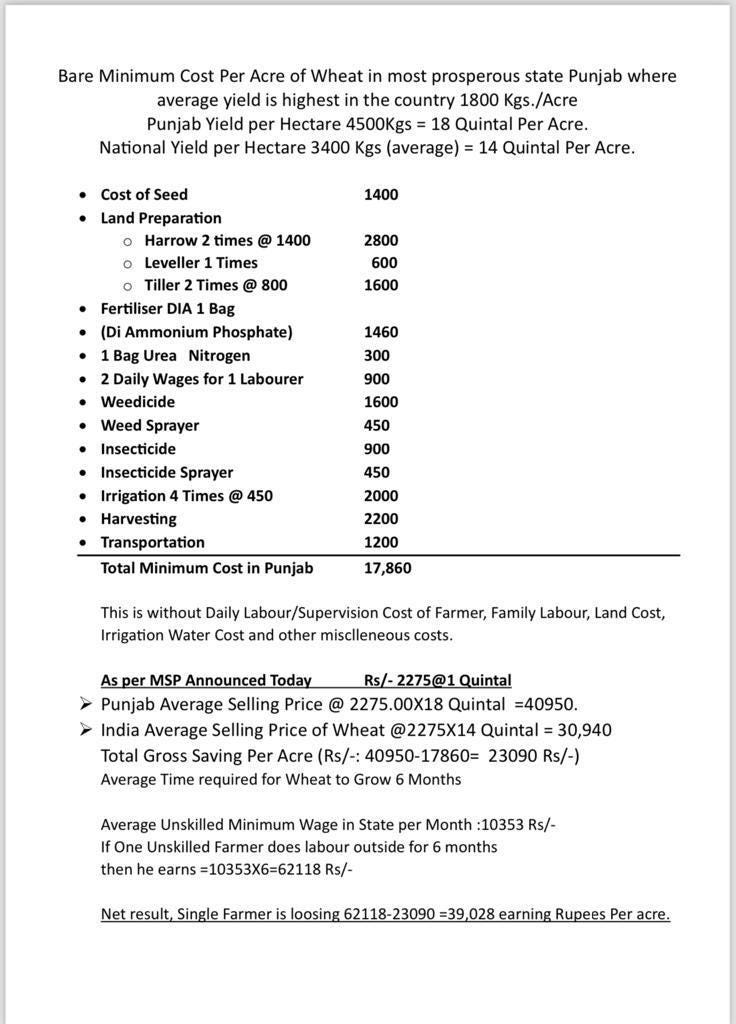Wheat MSP Hiked by Rs 150 per quintal— 102% margin over cost of production claims Government
Wheat MSP (2024-25) Announced— Rs 150 per quintal increase; 102% margin over cost of production PIB Press Note Claims.
Cabinet Approves Hike in Minimum Support Prices for Rabi Crops: A Focused Analysis on Wheat
The Cabinet Committee on Economic Affairs, led by Prime Minister Narendra Modi, announced a significant increase in the Minimum Support Prices (MSP) for all Rabi crops for the marketing season of 2024-25 yesterday (October 18, 2023). This move is seen as an effort to ensure remunerative returns for farmers and to incentivise diversification in cropping patterns.
Rise in Wheat MSP
While there has been an overall increase across different Rabi crops, the MSP for wheat specifically saw an uptick of Rs.150 per quintal, taking it from Rs.2125 to Rs.2275. The margin over the cost of production for wheat now stands at 102%, making it one of the most lucrative options for farmers this season. It has been stated in the Press Note1 that cost of production “includes all paid out costs such as those incurred on account of hired human labour, bullock labour/machine labour, rent paid for leased in land, expenses incurred on use of material inputs like seeds, fertilizers, manures, irrigation charges, depreciation on implements and farm buildings, interest on working capital, diesel/electricity for operation of pump sets etc., miscellaneous expenses and imputed value of family labour.”
A Balanced Approach
Critics argue that while an increase in MSP is a welcome step, there are other issues plaguing the wheat production sector that need to be addressed, such as inadequate storage facilities and inefficiencies in procurement. On the other hand, supporters maintain that this move will substantially uplift farmers' incomes, aligning with the Government's objective to double farmers' incomes by 2022.
The Government's approach seems balanced, particularly when it comes to wheat. The increase in MSP is in line with the Union Budget 2018-19 announcement of fixing the MSP at a level that is at least 1.5 times the All-India weighted average cost of production.
Additional Government Initiatives
Apart from revising the MSP, the Government has also launched various programmes aimed at enhancing agriculture. These include the National Food Security Mission (NFSM), Pradhan Mantri Krishi Sinchayee Yojana (PMKSY), and the National Mission on Oilseeds and Oil Palm (NMOOP). The Kisan Credit Card (KCC) Scheme, Kisan Rin Portal (KRP), KCC Ghar Ghar Abhiyaan, and Weather Information Network Data Systems (WINDS) are also noteworthy initiatives that aim to empower farmers.
Official View, Our Thoughts
The MSP hike for the Rabi crops, particularly wheat, is a well-thought out move to ensure better returns for farmers while also promoting crop diversification. However, for a more holistic development of the agriculture sector, there needs to be parallel progress in improving infrastructure and technology for farmers. As for wheat, the increase in MSP and the additional schemes could well set a positive trajectory for both the farmers and the Indian agriculture sector as a whole.
Setting the Record Straight: Debunking Social Media Miscalculations on Wheat MSP
In the wake of the recent Cabinet decision to hike the Minimum Support Prices (MSP) for Rabi crops, there has been a flurry of social media posts purportedly breaking down the economics of wheat farming. These posts suggest that the increased MSP is still insufficient to cover the cost of production, thereby painting a grim picture for farmers. However, a closer examination reveals that these calculations may be misleading, whether unintentionally or otherwise.
The Miscalculation Issue
The crux of the miscalculation appears to be the inclusion of labour or family labour costs as an additional expense. It's crucial to note that the government's MSP formula already accounts for such costs. These include not just material inputs like seeds, fertilisers, and irrigation charges, but also human labour, machine labour, and even the imputed value of family labour. Consequently, any analysis that adds labour costs atop the MSP is fundamentally flawed.
Government’s Rebuttal
While it is the prerogative of Government of India agencies to counter false narratives, it's essential to scrutinise information before sharing or forming opinions. The MSP has been carefully calculated to offer at least 1.5 times the All-India weighted average cost of production, providing a margin over cost of 102% for wheat as per the latest announcement.
A Nuanced Discussion
Though the MSP is based on comprehensive calculations, it's important to acknowledge that it isn't a silver bullet for the complex set of challenges facing the agriculture sector. In particular, the MSP alone might not suffice for farmers in Punjab to make a decent living, considering regional factors and other overheads. For a more comprehensive view on the challenges and opportunities for Punjab's farmers, one can refer to my YouTube videos that delve into the subject in detail.2
Looking Ahead
While the Government's hike in MSP for Rabi crops, including wheat, aims to ensure remunerative prices for farmers, it is equally important to counter any misleading information that could generate a false narrative. In the era of information overload, it becomes our collective responsibility to ensure that public discourse is rooted in facts and nuanced understanding.
https://pib.gov.in/PressReleseDetail.aspx?PRID=1968731
Playlist of 6 YouTube Videos of mine on “Farmers’ Income”
https://youtube.com/playlist?list=PLUZha0-2LLO2sSrxMqXLe02piqVrySgBt&si=daTodBgCgn2gfSYr








Good analysis with facts. Well written too👍
Vivid analysis 👍